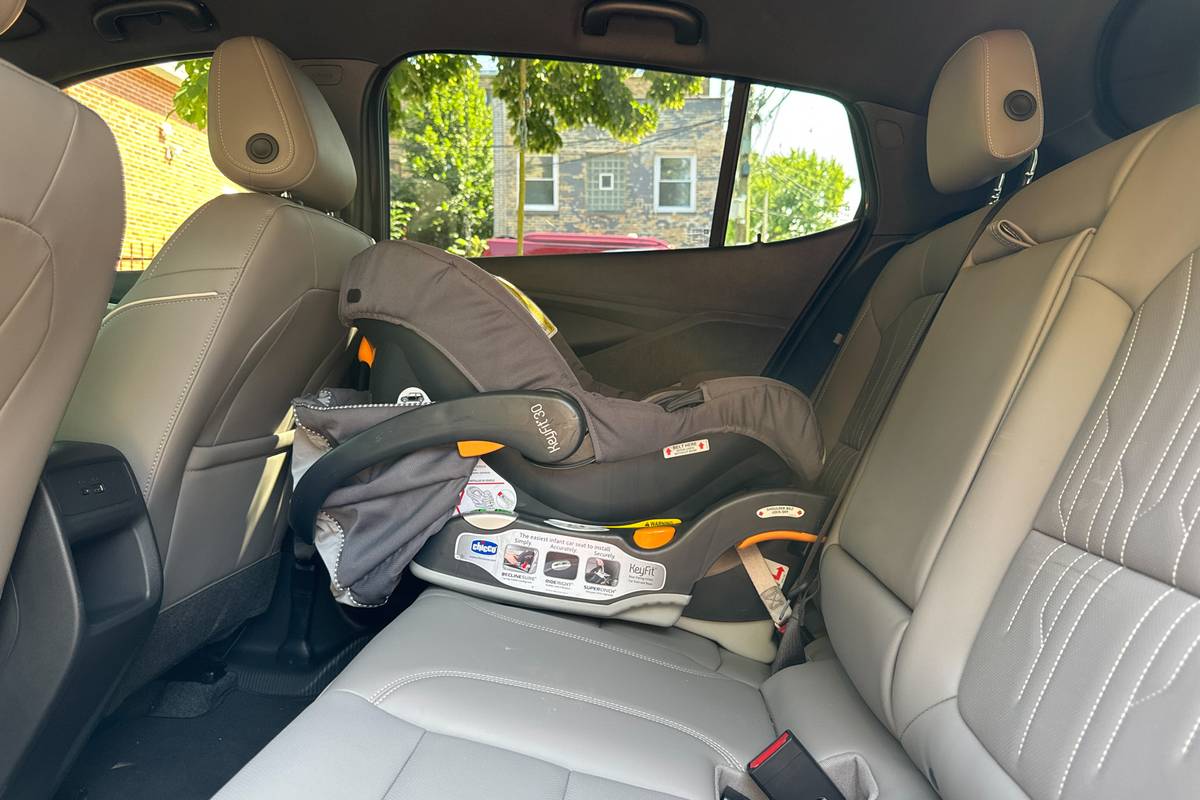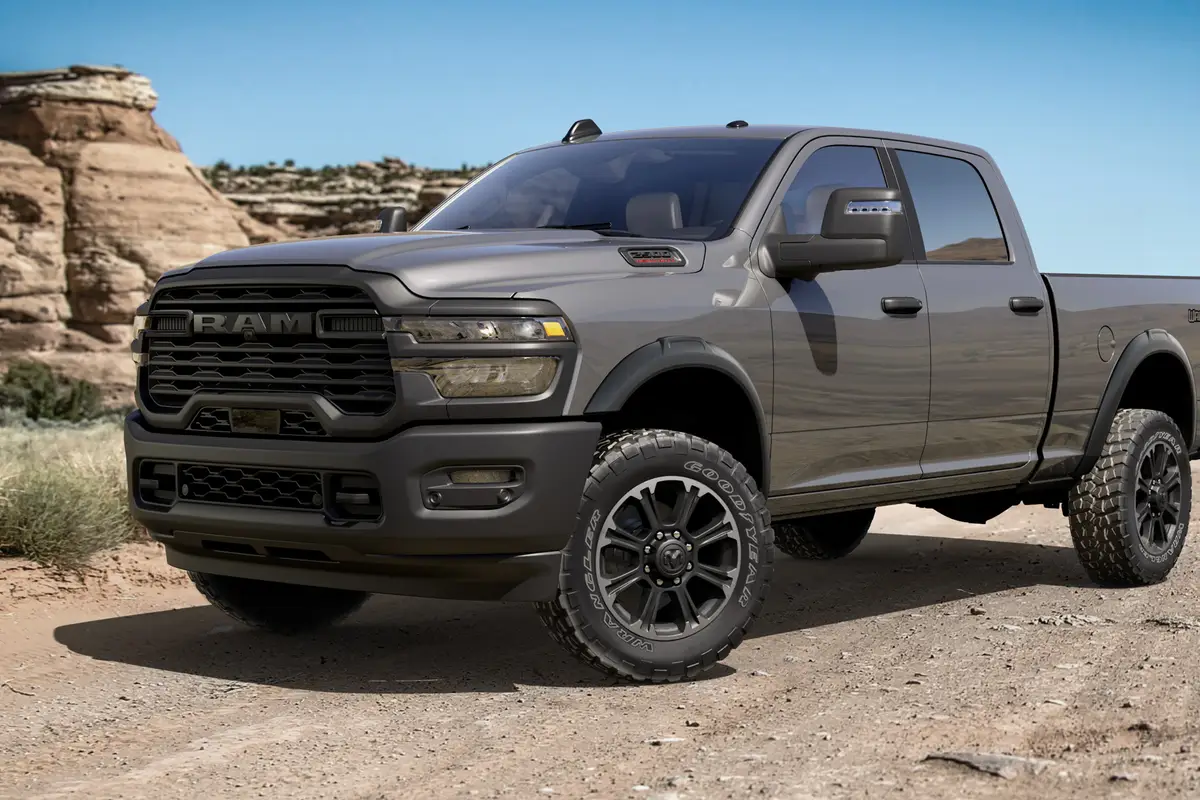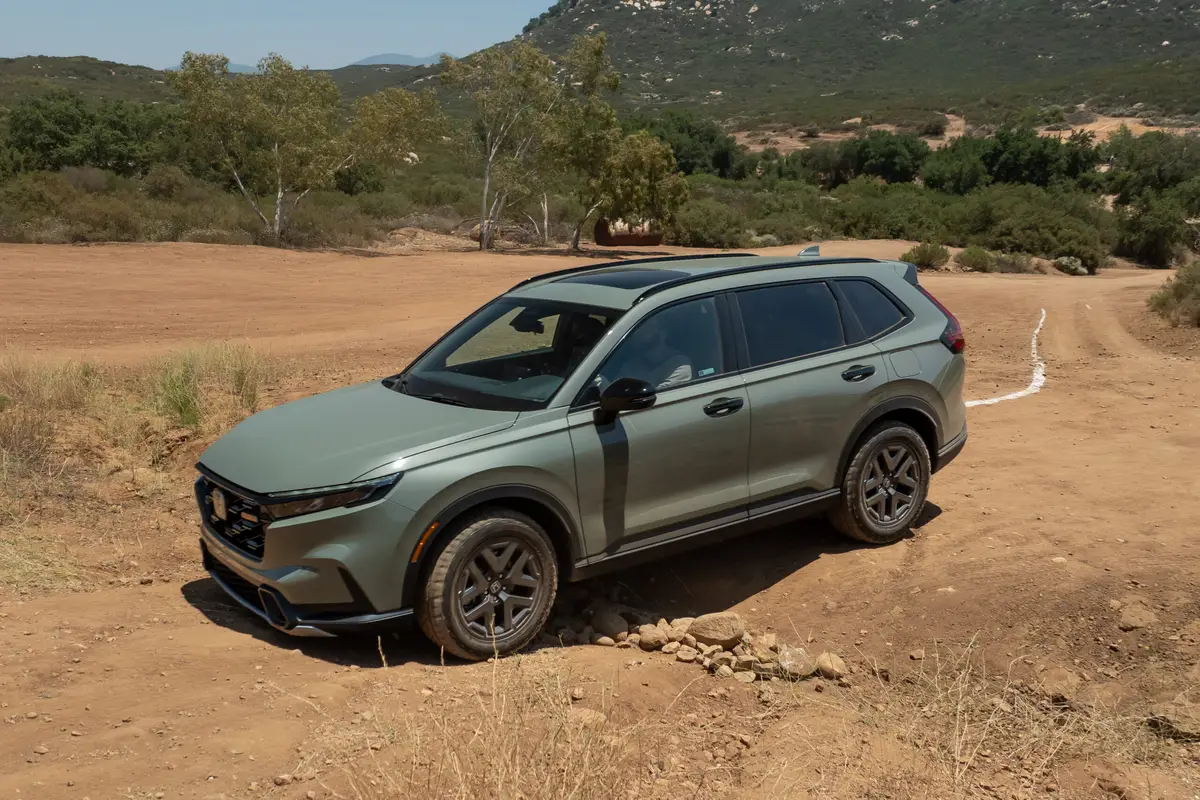chicagotribune.com's view
Used to be when you went shopping for a compact truck, the choices were fairly simple, you picked a 4-cylinder for mileage or a V-6 for towing.
That option checked off, it was on to rear-wheel-drive for on-the-road travel or four-wheel-drive for off-road adventure.
That accounted for, you then chose regular cab to hold you and the spouse or extended cab to hold you, the spouse and the rugrats.
Then you handed over the check and drove home.
Today there’s another decision to be made–the choice of how many doors you need–two or three or four.
For years that was simple–two conventional doors. Then came a tiny access panel behind the driver’s door on extended-cab models. When you chose that third door, you also got a jump seat that pulled out of the wall for the child to dangle on.
Finally, as the truck became recognized as a substitute for the sedan, came four conventional sedan-like doors.
For the 2001 model year, Chevrolet has joined Ford, Dodge, Toyota and Nissan in offering a compact pickup with four swing-open doors that allow you to get in or out like civilized human beings.
And once inside, you now have a conventional bench seat in back to hold three people facing forward rather than one person balancing sideways on a jump seat.
“We expect about 5 percent of the initial build of S-10s will be the new four-door Crew Cab as we ramp up production, but then move to 12 percent by the end of the model year. Next year we expect about 18 percent Crew Cabs and that could go higher,” said Jim Campbell, S-10 brand manager.
“In 1999, there basically weren’t any compact four-doors but now there are Crew or Quad cabs from Ford, Dodge, Nissan and Toyota and they account for about 21 percent of the market,” Campbell added.
Now that Chevy is offering the convenience of two extra doors, it soon will replace the S-10 with an all-new model in the ’03-’04 time frame.
Campbell won’t discuss details, but the next generation S-10 promises to be even more comfortable and more convenient, according to insiders, because it will be wider and longer than the current model–the two ingredients left out of the current recipe.
A new generation also is welcome because the S-10 is the only Chevy pickup not blessed with a fresh coat of styling in ages. The idea is to perform “like a rock,” not to look like one.
The current S-10 is built off the same platform as the Chevy Blazer sport-utility vehicle. But Blazer has been joined by a larger 2002 TrailBlazer built off an even longer, wider platform. The new Chevy truck will be larger than the current model but won’t be off the same platform as the TrailBlazer.
Have to expect that the new model also will offer a more potent V-6 with far better mileage than the 15 m.p.g. city/18 m.p.g. highway from the 4.3-liter, 190-horsepower V-6 in the Crew Cab. Campbell won’t say.
The new S-10 will arriv e compliments of Isuzu, the company in which GM owns an equity interest.
While Campbell is mum on specifics, Ron Zarrella, president of GM’s North American Operations, tipped a few details when outlining the automaker’s new small-vehicle strategy through 2004 at last fall’s Specialty Equipment Market Association show in Las Vegas.
Zarrella said GM’s new small-vehicle strategy will involve more teaming up with its partners to design and develop machines and share technology as well as parts and components to bring new vehicles to market more quickly as well as cheaply.
GM will rely on Suzuki, Toyota, Subaru, Opel and Isuzu for some of those small vehicles, he said.
“We’re going to leverage our alliances to realize cost efficiencies in order to cut spending but not cut product programs,” Zarrella said.
“We’re going to replace the S-10 with a broad array of configurations from that new vehicle developed with Isuzu,” Zarrella said, including “a youth-oriented package that includes large wheels and tires, flared fenders and an open air roof.”
That was the same speech in which Zarrella revealed a new larger, more upscale Cavalier is in the works for 2004 built off the Opel Astra from GM’s European subsidiary (a platform also shared with the next generation Saturn S-Series) and a “segment busting” all-wheel-drive crossover vehicle for Chevy with the function of an SUV, but the ride and handling of a car developed with its noted AWD equity partner Subaru. Only weeks later, Zarrella introduced the AWD Chevy Borrego concept on the auto-show circuit, calling it a “segment busting” machine.
But we digress.
In adding two doors, Chevy took some of the space out of the cargo bed and put it in the cabin in response to consumers asking for more room.
The rear bench in the S-10 doesn’t offer the room and comfort of a similar seat in a full-size Silverado, but it sure beats dangling from a jump seat facing sideways. There’s also limited storage space behind the seat back.
With a regular bench in back, Crew Cab now has a place to put a child safety seat so Chevy removed the passenger-side air-bag deactivation switch up front. But the regular- and extended-cab trucks offer that switch for times when a child seat must be used up front.
You can get a 6- or 7-foot bed on the regular- or extended-cab S-10, but the Crew Cab comes with a 4-foot 6-inch bed. The shorter bed makes it easier to maneuver, park and garage.
The shorter bed/bigger cabin also means a tad more front-seat travel for long-legged occupants in front, though not too much so rear seat occupants don’t suffer from crampedleg room, Campbell said.
If you need more cargo room, lower the tailgate and flip over the optional ($195) aluminum tube bed extender for the inches needed to haul the 2x4s. With the gate up and the extender flipped back into the bed, you also hold items in place without them being tossed about.
The Crew Cab comes only in 4×4 version, activated by pushing a button in the instrument panel. There’s also a 4×4 low if needed.
The Crew Cab tested comes with the same 4.3-liter, 190-h.p. V-6 in the Blazer SUV built off the same platform as the pickup.
The new, larger TrailBlazer sports a new 4.2-liter, 270-h.p. inline 6 that is not only more potent but also quieter than the 4.3-liter V-6 left behind in the S-10. Hopefully, the new larger S-10 from Isuzu will adopt the same strategy with a more potent, higher-mileage engine getting better than the 15/18 in the Crew Cab.
Base price of the vehicle tested was $24,809.
Standard equipment includes four-wheel disc brakes with anti-lock, air conditioning, power locks/windows/mirrors (heated), 15-inch aluminum wheels, cruise control, tilt steering, independent front suspension, daytime running lamps, remote keyless entry, tinted glass, rear-window defogger, overhead conso le with temperature and compass readings, floor-mounted console with dual cupholders, intermittent wipers, reclining high-back bucket seats, sliding rear window, full carpeting with mats and a 17.5-gallon fuel tank.
Odds and ends
Say it isn’t so. A rumor has surfaced that the Ford Forty-Nine concept displayed at the Chicago Auto Show, perhaps the most popular vehicle at the event based on the size of the crowds surrounding it, might have allowed an early peek at styling cues to be offered on the next-generation Ford Taurusrather than a peek at a new model to be added to the Ford lineup off the Thunderbird platform.
General Motors has been considering a street version NASCAR racer for its Chevy lineup as part of its plans to add more rear-wheel-drive offerings soon. No one at GM would say, but you had to suspect those plans involved NASCAR legend Dale Earnhardt’s No. 3 Chevy. No word on what Chevy will do in light of Earnhardt’s death at last month’ tona 500.
Latest news



